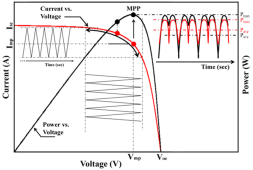Here is a post showing the capacitors on a higher-quality High-Frequency inverter and a low-quality High Frequency inverter: https://diysolarforum.com/threads/not-to-happy-with-magnum.44313/page-3#post-752607Yes I tried various PWM devices.
They all got too hot or fried.
Just to be clear I am not sure what I was doing.
Looks like you have the same MicroInverter I have.
You can just plug it in to the bench top power supply without the PWM.
Set it at 24-29V & 8Amp.
You can ramp it up from there.
I have done this with Enphase & SunnyBoy Micro Inverters, for days, loads of times.
If you are worried about frying it let me know the cost.
I will pay, at least, 1/2 the cost or maybe the full cost. (If it gets fried)
I need to know the cost of it FIRST.
Then I will tell you what $ I will put toward it.
If/when you fry one of your Enphase microinverters, it would be very interesting to know what kind of capacitors it has connected to the DC inputs… (an open call to anyone else who may have a dead Enphase Microinverter).
I have not gone to the trouble of tracing out the circuit to confirm they are connected to the DC inputs, but my single-MPPT-dual-MC4-inout 590W NEP Microinverters contain 8 large 2700uF 63V capacitors that also say 105C.
So just as a placeholder, 8x2700uF = 21,600uF and charging that to 25VDC through a 100mOhm resistance, that would mean an RC time constant 21.6ms, meaning the input is charged to ~12.5VDC after 15.12ms and is fully charged to 25V after 108ms.
Someone with more understanding than I needs to comment on whether this degree of startup surge upon connection looks like anything to be concerned about.
The other concern that has been voiced regarding the use of DC DC converters is high-frequency current ripple heating up the input capacitors.
Page 55 here has the specs for my Samxon GS(R) series capacitors: https://datasheet.lcsc.com/lcsc/2208091800_Man-Yue-Tech-ESK827M1JI30RR_C5123348.pdf
But someone with more knowledge than I of how to interpret capacitor ripple specifications will need to tell me what level of current ripple is likely to overheat and damage 4x2700uF of these capacitors…
(At least I know my dinky 590W Microinverters have 50% more input capacitance than Deye is putting on their higher-end Hybrid Inverters! (8x2700=21,600uF versus 14x1000uF = 14,000uF on the Deye).
Last edited:



